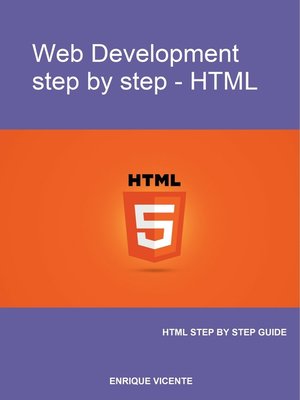
Sign up to save your library
With an OverDrive account, you can save your favorite libraries for at-a-glance information about availability. Find out more about OverDrive accounts.
Find this title in Libby, the library reading app by OverDrive.



Search for a digital library with this title
Title found at these libraries:
| Library Name | Distance |
|---|---|
| Loading... |
In this Web Programming Step by Step course we will learn the HTML language and its application to create web pages.
We enter the internet and we see numerous more or less colorful websites, with bright colors, animations ... Other websites are simpler with texts and some images.
Would you be interested to know how these websites are made?
What tools and languages are used to make web pages?
How can I build a personal website to test my programming progress?
I encourage you to follow my course on web application development Step by Step.
In this course we will see the different technologies used to make a website, static or dynamic websites, make a personal website ...
This guide is intended to be above all practical, with examples to follow and on which I will explain the different languages.
In this course we will first explain some concepts about the HTML language and then we will go over each of its components and their display on the screen with some examples.
We will learn to view images, include videos and sound, create tables and how to go from one web page to another through links.
At all times you will have the source code of the web pages as well as links for viewing in an internet browser.
If you want to start making your own web pages you can start with this basic course to later delve into the exciting world of the internet.
Index
Web Programming Course Step by Step - HTML
1.- Presentation
2.- First web page
3.- The HTML language
4.- Titles, header and footer
5.- Text styles
6.- Comments
7.- Lists
8.- Links to pages and URLs
9.- Creating links
10.- Images, audio and video
11.- Image formats
12.- Adding videos and sound
13.- Table elements and their attributes
14.- Grouping sections
About the Author
Author's ebooks







